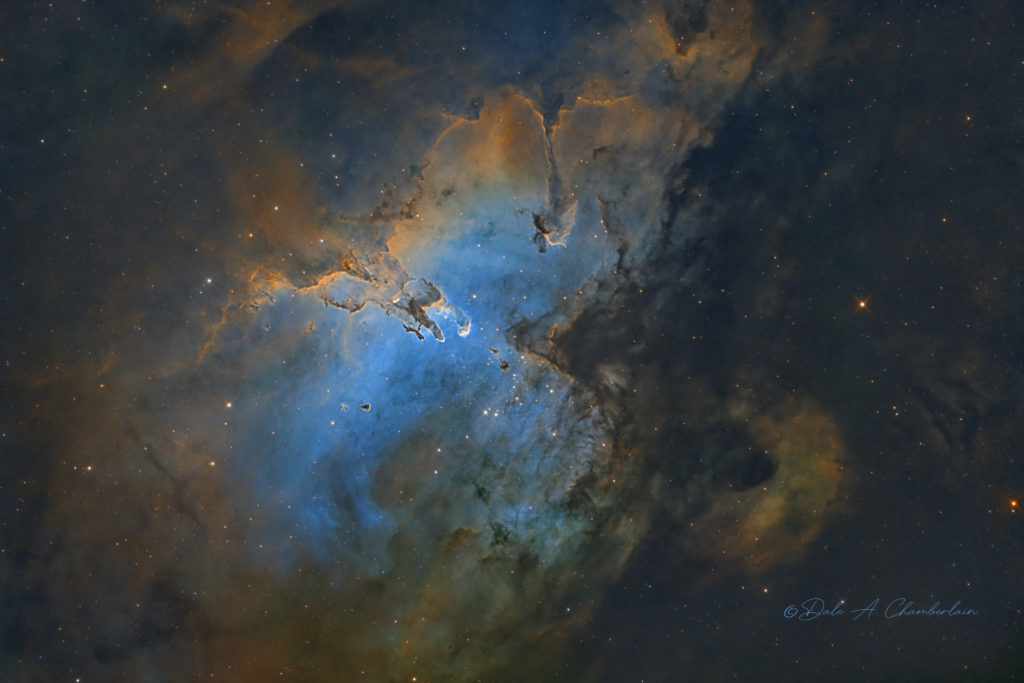
Object: The Eagle Nebula (catalogued as Messier 16 or M16, and as NGC 6611, and known as the Star Queen Nebula and The Spire) is a young open cluster of stars in the constellation Serpens, discovered by Jean-Philippe de Chéseaux in 1745–46. Both the “Eagle” and the “Star Queen” refer to visual impressions of the dark silhouette near the center of the nebula, an area made famous as the “Pillars of Creation” imaged by the Hubble Space Telescope.
The nebula contains several active star-forming gas and dust regions, including the Pillars of Creation.
It is approximately 5,700±400 light years away from Earth.
Evidence from the Spitzer Telescope originally suggested that the pillars in M16 may already have been destroyed by a supernova explosion. Hot gas observed by Spitzer in 2007 suggested that the area was disturbed by a supernova that exploded some 8,000 to 9,000 years ago. Due to the distance of the nebula, the light from the supernova would have reached Earth between 1,000 and 2,000 years ago. The more slowly moving shock wave from the supernova would have taken a few thousand years to move through the nebula and would have blown away the delicate pillars. However, in 2014 the Pillars were imaged a second time by Hubble, in both visible light and infrared light. The new images being 20 years apart provided a new, detailed account of the rate of evaporation occurring within the pillars. It was later discovered that there in fact was no supernova explosion within them, and it is estimated they will be around for at least 100,000 years longer.
Taken: July 19 and August 4, 2021
Telescope: Astro-Tech 14” RC with Starizona Apex-ED L 0.65x focal reducer
Mount: Paramount ME II
Camera: ZWO ASI2600MM-Pro (cooled to 0C; Gain 100) Bin 1×1.
Guiding: ZWO ASI290MM-Mini with ZWO M68 Off-Axis Guider (OAG)
Focuser: Moonlite Nitecrawler
Rotator: Moonlite Nitecrawler
Filters used: Chroma Ha, OIII and SII 3nm narrowband filters with a ZWO 7-position Electronic Filter Wheel (EFW)
Exposures: 8×300 seconds Ha; 10×300 seconds OIII; 10×300 seconds SII for a total exposure time of 2.33 hours; calibrated with 40 dark frames, 40 flat frames with 40 dark-flats.
Seeing Conditions:
Image capture and telescope control: Sequence Generator Pro and TheSkyX Pro with a SkyShed POD MAX observatory.
Processed with PixInsight, Photoshop CC 2021